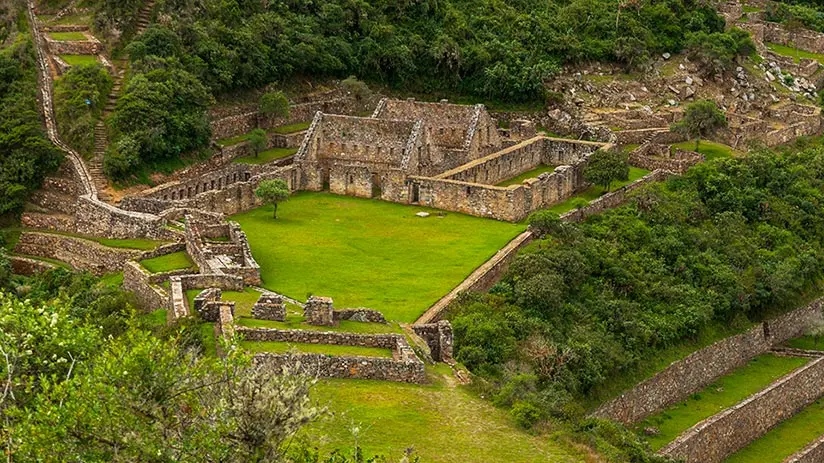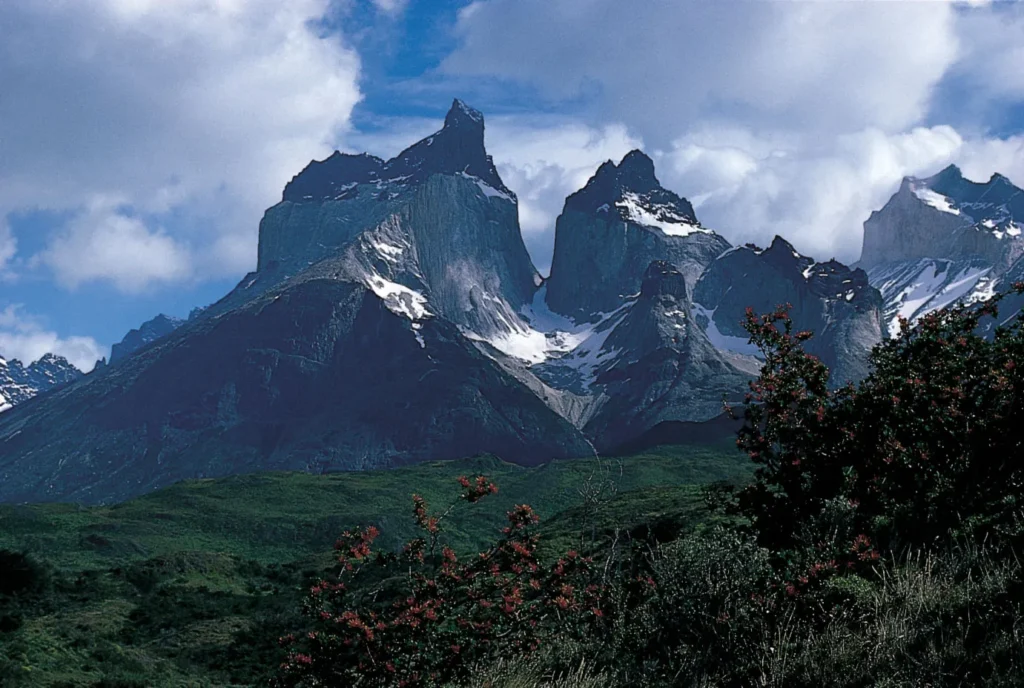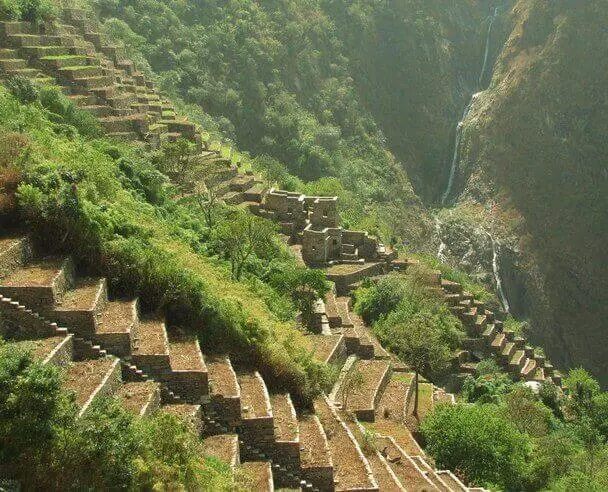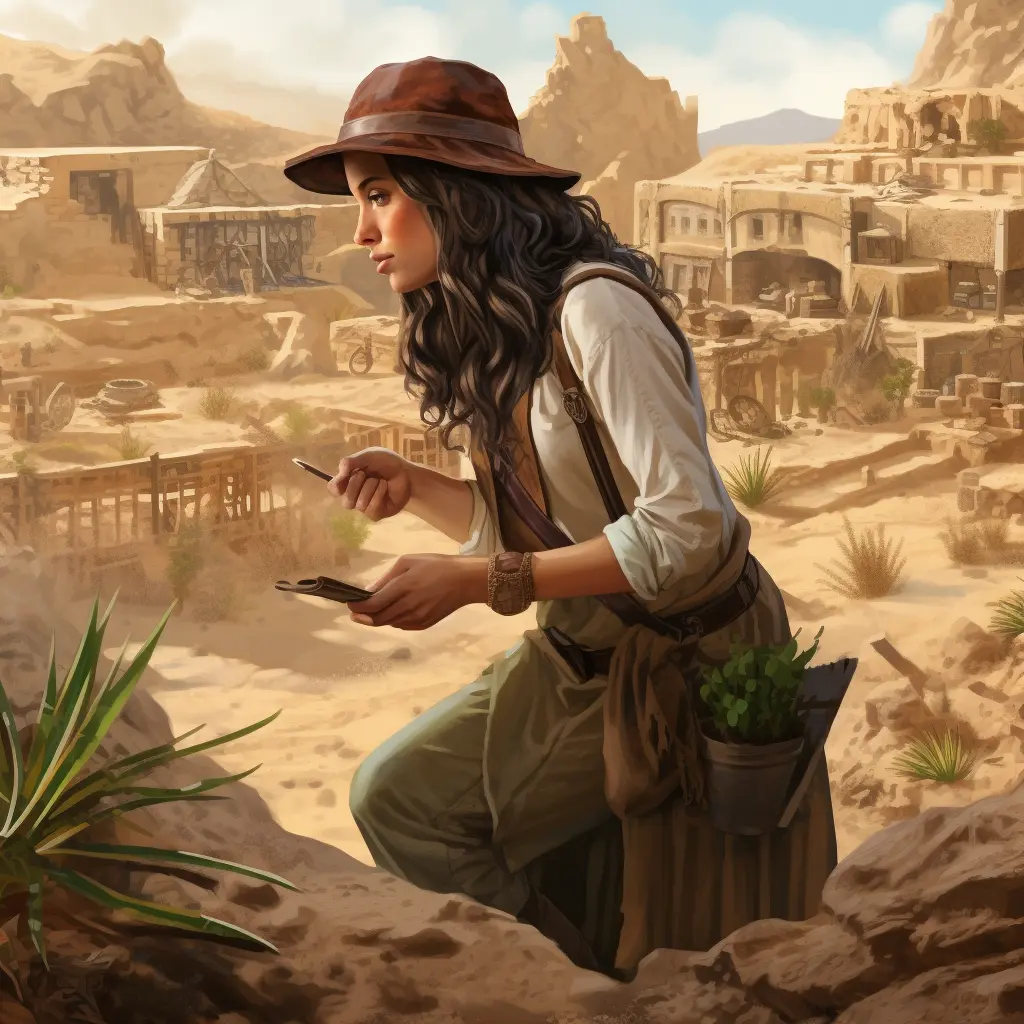
Brief Background on Choquequirao
Known as the “Cradle of Gold” in Quechuan, Choquequirao is a fascinating site reminiscent of the iconic Machu Picchu. A sight less crowded yet equally stunning, it’s nestled in the grandeur of the Salkantay Mountain Range. Inhabited by the Incas during the 15th and 16th centuries, it is believed that this monumental site served as a cultural and political center.
Importance of the Site
Recognized as a critical historical landmark for Peru, Choquequirao Archaeological Park serves as a potent reminder of the grandeur of the Inca Empire. This less-traveled sibling of Machu Picchu offers a glimpse into the past with its intricate stone constructions, extensive terracing, and colossal ceremonial complexes.
Beyond its history, Choquequirao plays a vital role in the region’s biodiversity, acting as a refuge for various endangered species. Furthermore, its growing tourism potential contributes to local economic growth. So, its preservation is essential not just for its historical and cultural richness but also for its ecological importance and substantial socioeconomic impact.
Location and Access to Choquequirao
Geographic Placement of Choquequirao
Nestled in the remote regions of Peru’s Southern Sierras, Choquequirao offers an intriguing escape into a forgotten past. Tucked within the Vilcabamba mountain range, it rests approximately 98 kilometres west of the city of Cusco.
Access to this mystical locale is no small feat, as it necessitates a demanding two-day hike from the closest town of Cachora, traversing the Apurimac canyon trail. The journey to Choquequirao weaves through craggy cliffs and lush green vegetation, unveiling breathtaking landscapes. Altitudes here reach highs of 3,103m, making acclimatization crucial for visitors. The solitary beauty of Choquequirao is enhanced by its remoteness and limited accessibility.
How to Reach Choquequirao
Reaching Choquequirao is an adventure in itself, often involving multi-day treks. Peru’s second-largest city, Cuzco, serves as the primary access point to begin the journey. From Cuzco, a 4-hour drive takes you to the town of Cachora from where the common 2-day trek to Choquequirao begins.
This trek, complete with steep inclines and breathtaking views, is both challenging and rewarding. Alternatively, mule packs can be hired in Cachora to carry equipment. It’s also necessary to prepare for overnight camping, as there are no accommodations available on the trail. Thus, the expedition to this remote site demands thorough preparation and a sturdy disposition.
Related: The Mind-Blowing Story Of The Half Moon Underwater
History of Choquequirao
Early History and Background
The roots of Choquequirao date back to the 15th century when it was established by the Incan Empire. Widely considered a sister city to Machu Picchu, the archaeologists believe that Choquequirao was constructed during the reign of Tupac Inca Yupanqui. The sprawling site offered a strategic advantage to the Incas owing to its familial connections and its formidable location, clasped within the rugged landscape.
However, its grandeur was comparatively short-lived. With the Spanish conquest in the 16th century, Choquequirao met its decline and was eventually abandoned, plunging into years of obscurity. It was not until the 18th century that a French explorer rediscussed it, bringing this hidden jewel of Incan prestige back to light. Today, it stands as a symbol of the Inca’s resistance and grandiosity, offering illuminating insights into their past.
The Role in Incan Civilization

Centered in the heart of the Andean mountains, Choquequirao played a crucial role in Incan civilization, serving as an administrative, political, and military hub. While less known compared to its neighbor Machu Picchu, Choquequirao held equal, if not more, importance during the Incan reign. Being strategically placed between the Andes and the Amazon rainforest, it facilitated trade and communication amongst surrounding regions.
Its complex architecture, such as elevated platforms and terraces, reflects engineering prowess and cultural richness. Preserving several important facets of Inca society, including agricultural, celestial, and religious practices, Choquequirao provides an impactful reflection of the past. Analyses of these ruins have played a significant role in understanding the political and social dynamics of the Incan civilization, underscoring Choquequirao’s importance in the historical narrative.
Architectural Highlights
Terraces and Temples
Deemed as one of the most significant features of the site, the extensive terraced system at Choquequirao exemplifies the Incan ingenuity in adaptation to diverse terrains. These intricately constructed agricultural terraces, which appear like giant stairways on the mountain side, helped support the population with their farming needs and controlled erosion. Amidst this collection of terraces, travelers will encounter the ‘llama terraces,’ where the stones are intricately arranged to depict the likeness of llamas in their profile.
This unique aesthetic feature captivates the viewers, demonstrating the harmonious blend of utility and artistic expression. Furthermore, the temple remains at Choquequirao reveal a lot about the spiritual lives of the Incans. Most notable among these is the ceremonial platform, the ‘usnu,’ where rituals and public speeches were believed to have taken place. Despite the years of deterioration, the striking features and strategic design of these structures connect the past with the present, offering an encapsulated glimpse into the rich tapestry of the ancient Incan civilization.
Residential and Administrative Structures
Unearthing the profound architectural wonders of Choquequirao reveals a sophisticated blend of residential and administrative infrastructures. Flowering out around the central plaza, the residential section consists of numerous terraces, believed to house Incan nobility. Each home exhibits the classic Inca architecture that consists of trapezoidal doorways, stone walls, and thatched roofs, revealing insights into a well-structured social hierarchy. Nearby, the administrative area features well-preserved, high-stone walled infrastructure that perhaps served as the hub of political activity and governance.
Diverse in structure and size, these buildings possibly contained distinct functions such as offices of the state, courthouses, and archive rooms. However, the centerpiece of intrigue lies in the elaborate irrigation system, which suggests a well-organized water supply and waste management. Intricately channeled through stone-built conduits, these underline the Incan ingenuity in civil engineering and their grasp over natural resource management. These relics of the residential and administrative precinct offer a comprehensive understanding of the urban planning and daily life activities of the ancient Inca, further emphasizing the monumental importance of Choquequirao.
Related: The Biggest Controversies Surrounding Archaeology
The Apurimac Valley Exploration
Flora and Fauna around Choquequirao

Brimming with an abundant array of flora and fauna, the areas surrounding the Choquequirao are simply a nature lover’s paradise. The verdant landscape is adorned with various species of exotic plant life, including vibrant orchids, bromeliads, and begonias, which add a splash of color to the terrain. The area is also a hotbed of wildlife, hosting creatures like the spectacled bear, Andean condor, and hummingbirds. The thriving ecosystem combines with the stunning topography to create a zone of breathtaking natural beauty. This biodiversity makes traversing the Apurimac Valley a unique and enriching journey into the heart of Peru’s natural world.
Outdoor and Recreational Activities
In the depths of the Apurimac Valley lies a myriad of engaging outdoor escapades. A hotspot for hikers and history buffs, the trail to Choquequirao allows one to surrender to nature’s humbling grandeur, where scenic views accompany every step. Trekking could last for several days according to your pace, unraveling diverse flora and fauna on the way. Alternatively, for adrenaline-seekers, white water rafting in the fierce currents of the Apurimac River offers an invigorating experience. The serene surroundings also make for fantastic bird-watching opportunities, adding an extra layer of charm to this stimulating exploration.
Current Conservation Efforts
Role of Government and Local Communities
The Peruvian government, recognizing the site’s value, collaborates closely with local communities for rigorous conservation efforts. As guardians of this cultural asset, they implement cleaning campaigns, restrict industrial development, and enforce strict visitation rules. Provincial authorities offer training programs to locals, enhancing their skills as park custodians and guides. Community participation is strongly encouraged, fostering an active participation towards preserving this Peruvian gem for future generations. This symbiotic relationship nourishes the heritage while providing socioeconomic growth for the region.
Challenges Faced and Future Efforts
The preservation of Choquequirao faces numerous challenges. It’s remote and inaccessible location, with treks taking multiple days, hinders regular maintenance and surveillance. Illegal activities, including looting and deforestation, remain ongoing threats. Nonetheless, future plans include improving the accessibility of the site to protect and promote its historical significance. The goal is to strike a balance between expanding tourism, providing economic benefits to local communities, whilst ensuring the site is conserved effectively.
Tips for Visiting Choquequirao
Best Time To Visit
For a fulfilling exploration experience, there are certain optimal periods to consider. The most favorable time would be during dry season which falls between May and October. As the region experiences a subtropical highland climate, this period tends to be less rainy, thus facilitating easier trails. However, bear in mind that the peak months of June, July and August can often be crowded. Alternatively, you may opt for shoulder seasons, usually from April to early May, and late October to November, to avoid heavy traffic while still enjoying a pleasant climate. Preparing based on seasonal trends will make your trip more enjoyable.
What To Bring With You
For a successful tour of this historic treasure, certain items are crucial. Pack a sturdy pair of hiking boots and lightweight clothing that can be layered, as temperatures can fluctuate. A brimmed hat, high SPF sunscreen, and shades will protect you from the intense sun. A refillable water bottle, energy bars and high-protein snacks are essential to keep you hydrated and maintain energy levels. Additionally, consider bringing a portable power bank to keep your mobile devices charged. Lastly, don’t forget your camera to capture the stunning views and memories of your trek through this fascinating archaeological site.



